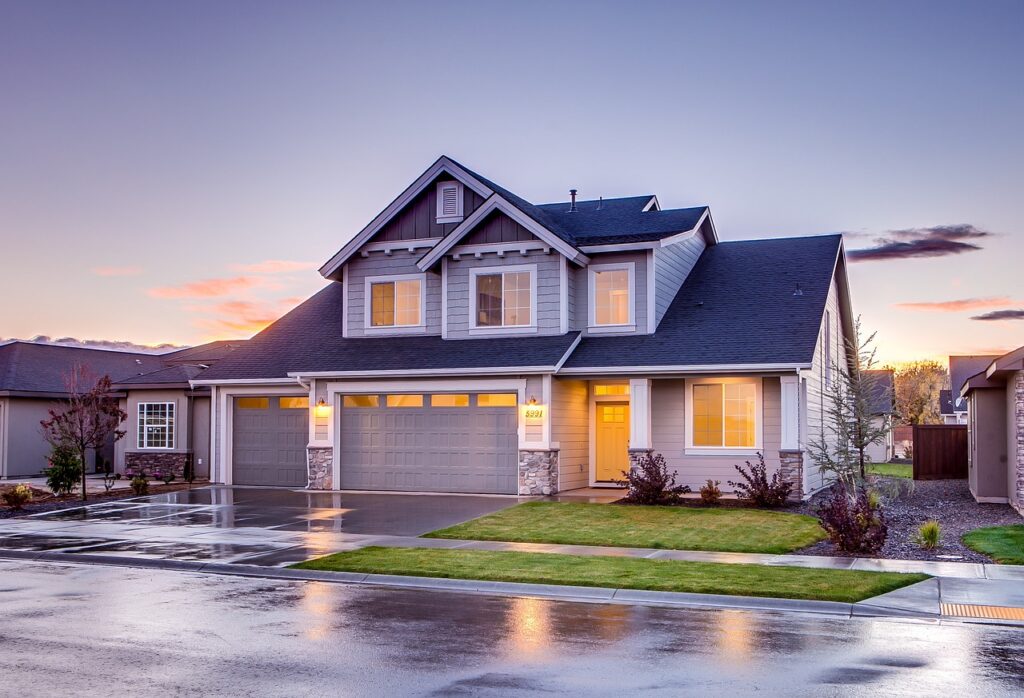When building the garage, you do not just put together all the materials and expect to have a functional garage that is right for you in an instant. Understanding the importance of proper sizing is just as important.
Selecting the right size for your metal garage is a critical decision that influences functionality, long term satisfaction, and investment value. The size of the structure determines how well it accommodates your vehicles, tools, and storage needs. It also affects the potential for future use, whether for hobbies, a home-based business, or additional storage requirements. A properly sized metal garage ensures that space is maximized without overspending on materials or construction.
Assessing the Purpose of the Garage
The first step in choosing the right size for your metal garage is to clearly define its intended use. A garage designed solely for vehicle storage will have different spatial needs compared to one used for a workshop or recreational activities. Some owners want a space that serves multiple functions including a place to park vehicles and store gardening tools. Others may want room to perform car repairs or woodworking.
A single car garage usually requires a space that accommodates one vehicle with additional clearance on each side. A two car garage requires significantly more width and often some extra depth if storage shelves or workbenches are included. Larger garages for three or more vehicles may also need height adjustments for trucks or recreational vehicles.
Evaluating Your Current and Future Needs
Planning for the future is essential when choosing garage dimensions. A garage that meets your needs today might become insufficient as your storage demands grow. Additional vehicles, new equipment, or changes in lifestyle can quickly render a small garage inadequate. Choosing a size that allows for expansion or includes extra square footage from the beginning can prevent costly upgrades later.
Families often expand their vehicle collection or acquire items such as bicycles, motorcycles, or seasonal decorations that require storage space. Homeowners who anticipate changes in household size or hobbies should consider these factors before deciding on a final layout.
Considering the Size of Your Property
The size and shape of your property will limit the maximum dimensions for your garage. A small lot may restrict your options and require creative space management. Before finalizing a garage size, it is important to evaluate property boundaries and any local building codes or zoning regulations. These may determine setbacks from the property line or limit the height of your structure.
You should also think about access. Make sure the garage placement allows easy entry and exit. If you plan to install large garage doors, you need to factor in the swing radius and driveway alignment. Adequate space for turning and maneuvering vehicles is essential.
Measuring Vehicle Dimensions Accurately
Vehicle dimensions vary widely and impact the required size of your garage. You must measure the length, width, and height of each vehicle to be stored. Allowing extra space on each side of the vehicle ensures doors can be opened comfortably and walking around the vehicle is possible. You should also consider overhead clearance if your garage includes doors that open upward or storage shelves above the vehicle.
Trucks, vans, and sport utility vehicles often require more vertical space. If your vehicle has rooftop attachments such as cargo boxes or bike racks, you may need even more headroom. Accurate measurements will prevent design flaws and ensure your garage serves its purpose without restrictions.
Planning for Storage and Work Areas
A well designed metal garage is more than a parking space. Many people use garages for storage or as a workshop. Incorporating these additional functions requires extra square footage. Tools, lawn equipment, seasonal items, and hobby supplies take up room and must be stored safely and conveniently.
Adding shelves, cabinets, or workbenches demands enough space to move around without crowding the vehicle. Planning for these features during the initial design phase helps avoid the need for structural changes later. Think about your workflow and storage habits to determine how much additional space you need beyond the footprint of your vehicles.
Accounting for Insulation and Climate Control
Some garage owners choose to insulate and heat or cool their metal buildings. This may affect your choice of size because the addition of insulation and HVAC systems can take up interior space. If comfort is a priority for your garage, especially if you spend extended periods inside, planning for insulation from the beginning is essential.
Insulated walls and ceilings may reduce usable width and height slightly. Additionally, air conditioning units, heaters, and ductwork require space for installation and maintenance. Consider how climate control components will integrate into your garage design when deciding on the final dimensions.
Evaluating Door and Window Placement
Garage doors and windows contribute to the overall usability and comfort of your metal garage. The size and number of doors influence how easily you can move vehicles in and out. For garages with multiple bays, doors must be spaced adequately to allow simultaneous use. Window placement affects lighting and ventilation, which improves the environment inside the garage.
Door height is especially important for owners of lifted trucks, vans with roof racks, or trailers. A standard door may not be sufficient. Oversized doors or custom configurations should be considered based on your current and future vehicle types.
Checking Local Building Codes and Permits
Every municipality has regulations governing the construction of outbuildings including garages. Local codes may dictate how large your garage can be and where it may be placed on your property. You may need to apply for permits and submit design plans for approval before construction begins.
It is wise to check for any restrictions related to utility easements, drainage systems, and access to emergency services. Failing to comply with these rules can delay your project or result in fines and mandatory modifications. Working with a contractor who is familiar with local regulations can help ensure your project proceeds smoothly.
Balancing Aesthetics with Functionality
A metal garage should be both functional and visually pleasing. The size of your garage will impact the overall look of your property. A garage that is too small may appear out of place or underutilized. One that is too large could dominate your landscape or clash with the design of your home.
Selecting the right size means striking a balance between practical needs and visual harmony. Consider how your garage will look in relation to your house, fence lines, trees, and other structures. Customizing finishes, colors, and roof styles can help the garage blend into your existing environment.
Choosing Between Standard and Custom Sizes
Manufacturers of metal garages often offer standard sizes that work well for most residential needs. These predefined sizes can be more affordable and quicker to install. However, custom sizes provide flexibility for unique properties or specialized uses. A custom sized garage can be tailored to specific vehicle dimensions, odd lot shapes, or special storage requirements.
Choosing between standard and custom options depends on your priorities. If cost and speed are most important, a standard size might suffice. If you want a long term solution that fits perfectly with your lifestyle and property, customization may be worth the investment.
Working With a Reliable Contractor
Once you determine the ideal size for your metal garage, finding a trustworthy contractor becomes the next priority. A professional contractor can guide you through the design process, help you understand construction codes, and ensure quality installation. Contractors with experience in metal structures will know how to optimize the layout for strength and usability.
You should ask for references and verify credentials. Review past projects to ensure the contractor can deliver a garage that meets your expectations. Open communication and clear contracts are essential for avoiding misunderstandings and ensuring the final product aligns with your vision.
Considering Cost Implications
Larger garages cost more to build due to increased material and labor requirements. Before settling on a size, you need to assess your budget and determine how much you are willing to spend. Some costs are obvious, such as steel panels, framing, and labor. Others may include site preparation, permits, insulation, and interior features.
It helps to obtain detailed quotes from multiple contractors and compare what is included. A larger garage may offer more value in terms of functionality and future use, but it must fit within your financial plan. Making a smart investment means weighing cost against benefits and long term satisfaction.
Thinking About Resale Value
A well sized garage can increase the resale value of your home. Buyers often view a spacious and versatile garage as a major selling point. When choosing the size, consider how it might appeal to future owners. A garage that is too small may be seen as a limitation. One that is too large for the lot may deter potential buyers.
Adding features that enhance functionality without going overboard in size usually strikes the right balance. As you plan, think about what buyers in your area typically look for and how your garage will compare to others on the market.
Allowing Room for Outdoor Improvements
A large garage should not consume all the outdoor space on your property. Leave room for landscaping, patios, or garden features that enhance your enjoyment of the area. If your garage is too close to the house or lot boundaries, you may feel confined and miss opportunities for outdoor activities.
Planning the garage as part of your overall outdoor space design ensures that it complements rather than competes with other features. Think about how walkways, lighting, and yard access will work with the new structure.
Adapting to Long Term Trends
Some homeowners overlook future trends when choosing garage dimensions. Vehicle sizes continue to evolve, and many people are embracing electric vehicles that require charging stations. Planning for a slightly larger garage now can help accommodate these changes. Including space for battery storage or future installations like solar panels ensures your garage remains relevant.
Your garage should not only meet current needs but also adapt as your life and technology advance. Thinking ahead when selecting size positions you for a smoother transition into future trends.
Conclusion
Choosing the right size metal garage involves careful consideration of current usage, future needs, property limitations, and personal preferences. From measuring vehicles to planning for workspaces and storage, every detail plays a role in determining the ideal dimensions. A well thought out garage offers convenience, protection, and long term satisfaction.
Consulting with experienced professionals, reviewing your options, and considering both function and form will help you make a smart and lasting decision. A correctly sized metal garage becomes a valuable part of your property and enhances your daily life in countless ways.

